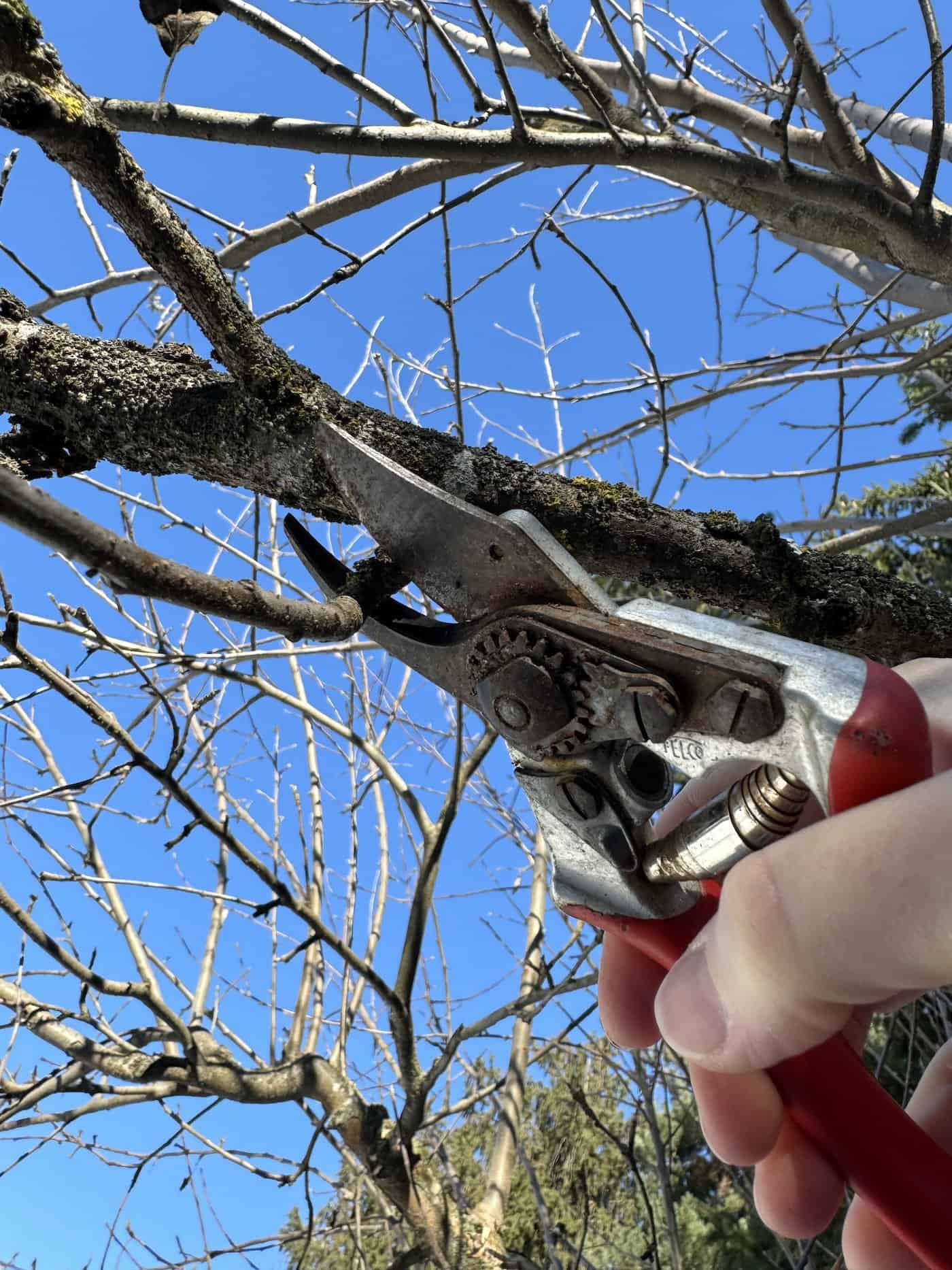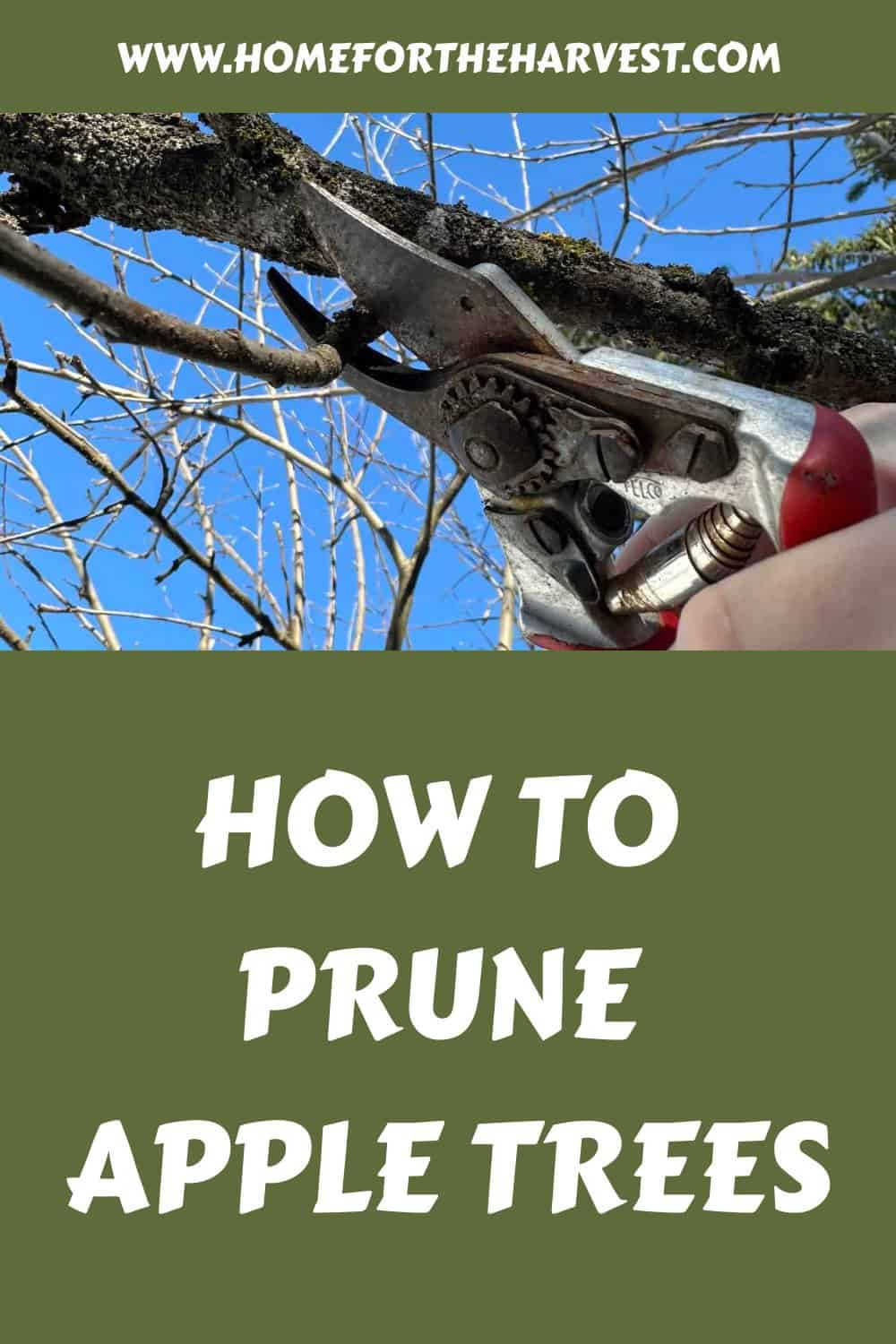To prune an apple tree, start by removing any branches that are dead, diseased, or damaged. You’ll also want to remove any vertical “water sprouts” from the top.
Next, trim out branches growing inward or crossing over (and rubbing) other branches. Thin out any remaining crowded areas of the tree by removing some of the weaker branches, taking care not to remove too many at once.
Finally, prune the outer canopy of the tree to the desired shape, taking care not to remove more than about a third of the branches in a single year.
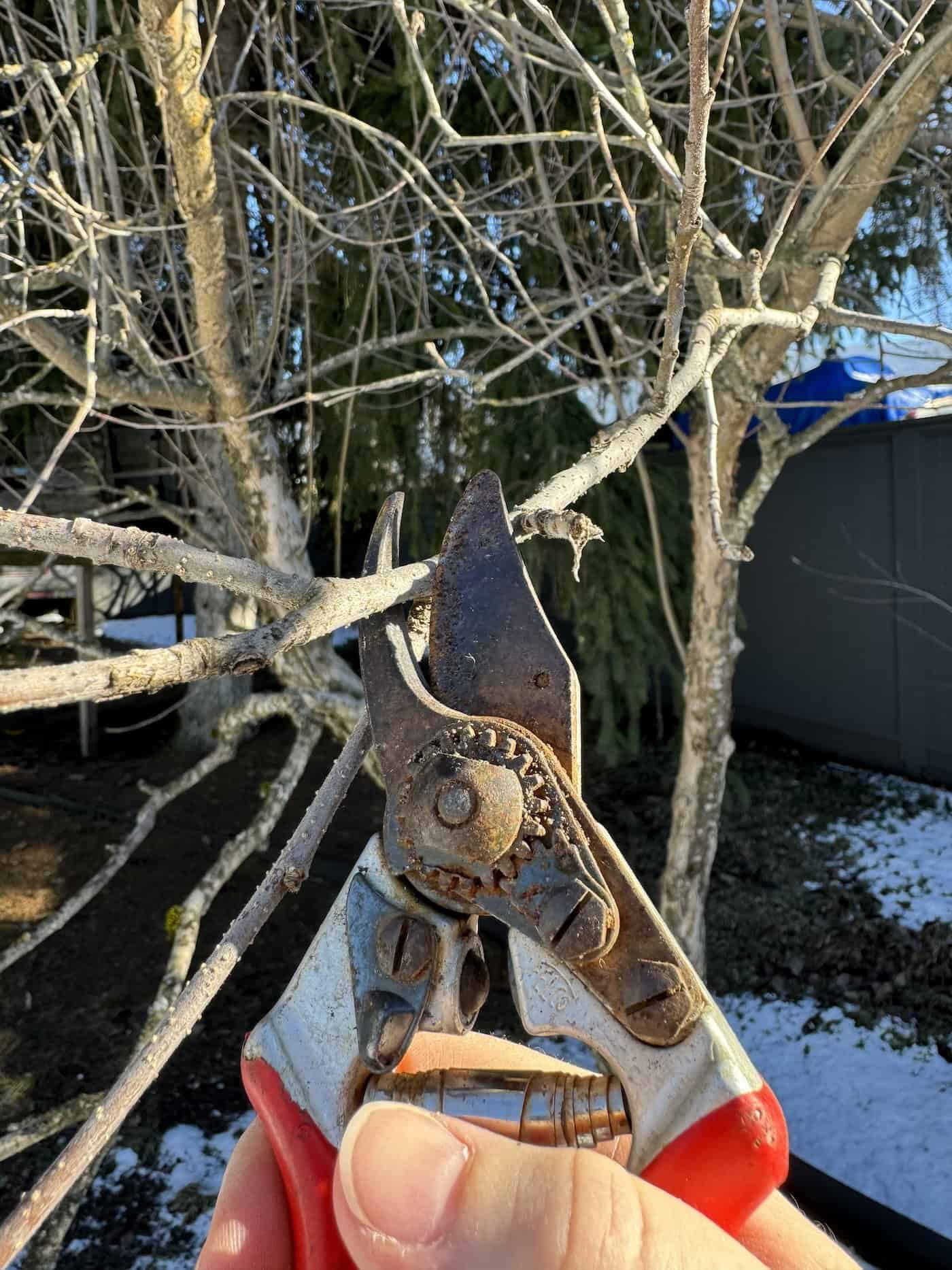
How to prune apple trees
Pruning apple trees is an important part of maintaining a healthy and productive tree. It helps to shape the tree, remove diseased or damaged branches, and encourage the growth of new, healthy fruit-bearing branches. Pruning can also improve the tree’s overall health and increase the size and quality of the fruit.
Tools for pruning apple trees
It is important to use the proper tools when pruning apple trees. A pair of pruning shears or a small saw is recommended for cutting branches. It is also helpful to have a ladder if you need to reach higher branches. Make sure to sterilize your pruning tools before and after use to prevent the spread of disease. Always use caution when using ladders and pruning tools, and follow all safety guidelines.
Basic apple tree pruning process
To prune an apple tree, start by removing any dead, diseased, or damaged branches. They usually snap right off (but be sure to cut back to the bottom of the branch rather than leaving a half-dead stub). Also remove any vertical branches growing straight up, as these rarely fruit.
Next, remove any branches that are growing inward or crossing over other branches, as these can interfere with the tree’s natural shape and airflow. Thin out crowded areas of the tree by removing some of the smaller branches, taking care not to remove too many at once. Finally, prune the tree to the desired shape, taking care not to remove more than 1/3 of the canopy in one year.
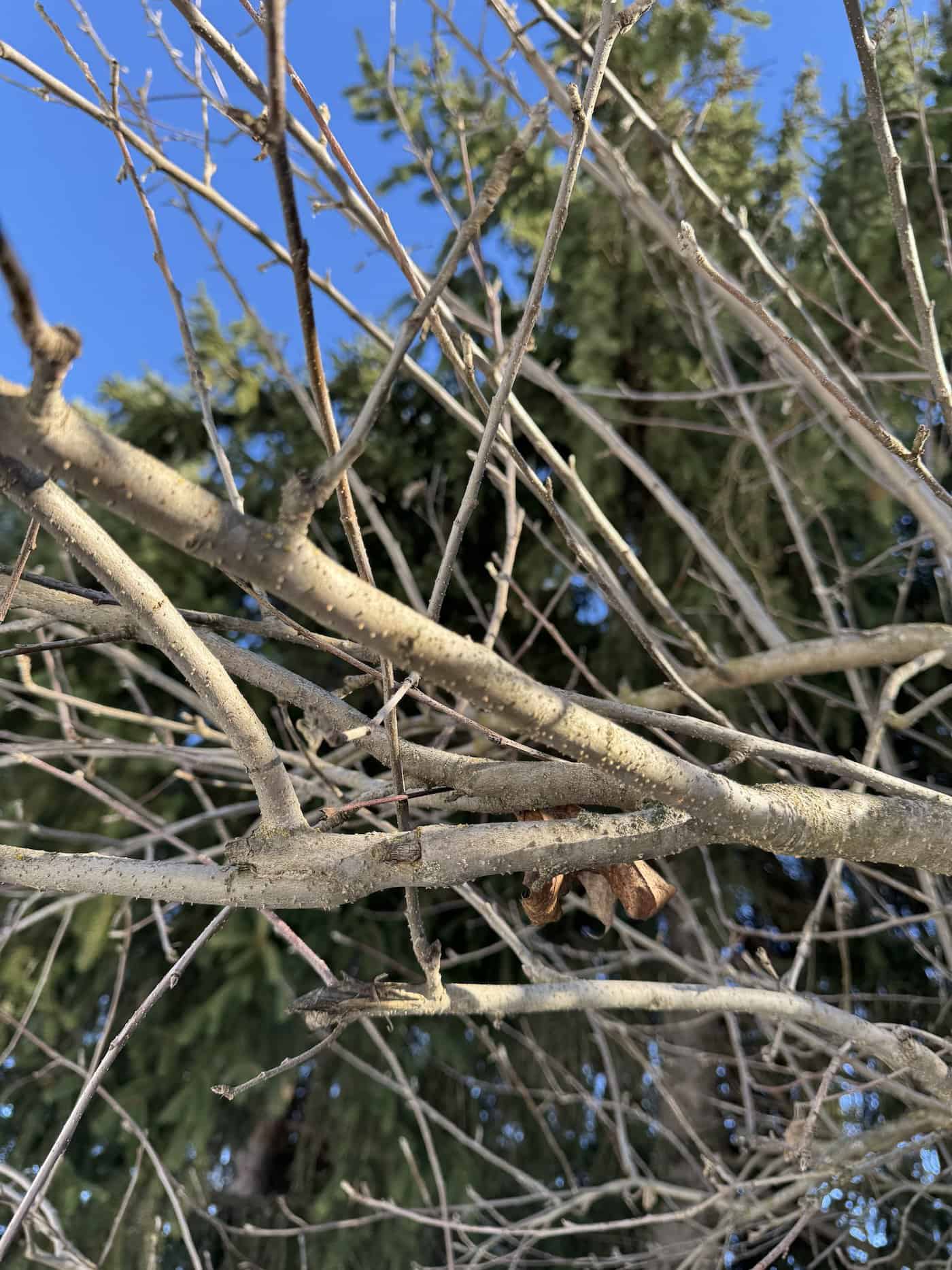
When to prune apple trees
The best time to prune your apple trees is when the trees are dormant. This means that winter pruning is the best time to prune. The best time to prune apple trees is when the coldest part of late winter has passed. This is typically in February or early March. If buds are starting to grow, you have waited too long to prune. Pruning too soon or too late can stress fruit trees, so pay attention to these factors before pruning.
Summer pruning should only be done to maintain a fruit tree’s shape or to remove damaged branches and diseased branches as needed. Proper pruning is usually done when the tree is dormant and not actively producing fruit. Refrain from over-pruning as well. Heavy pruning will harm your tree and keep it from vigorous growth.
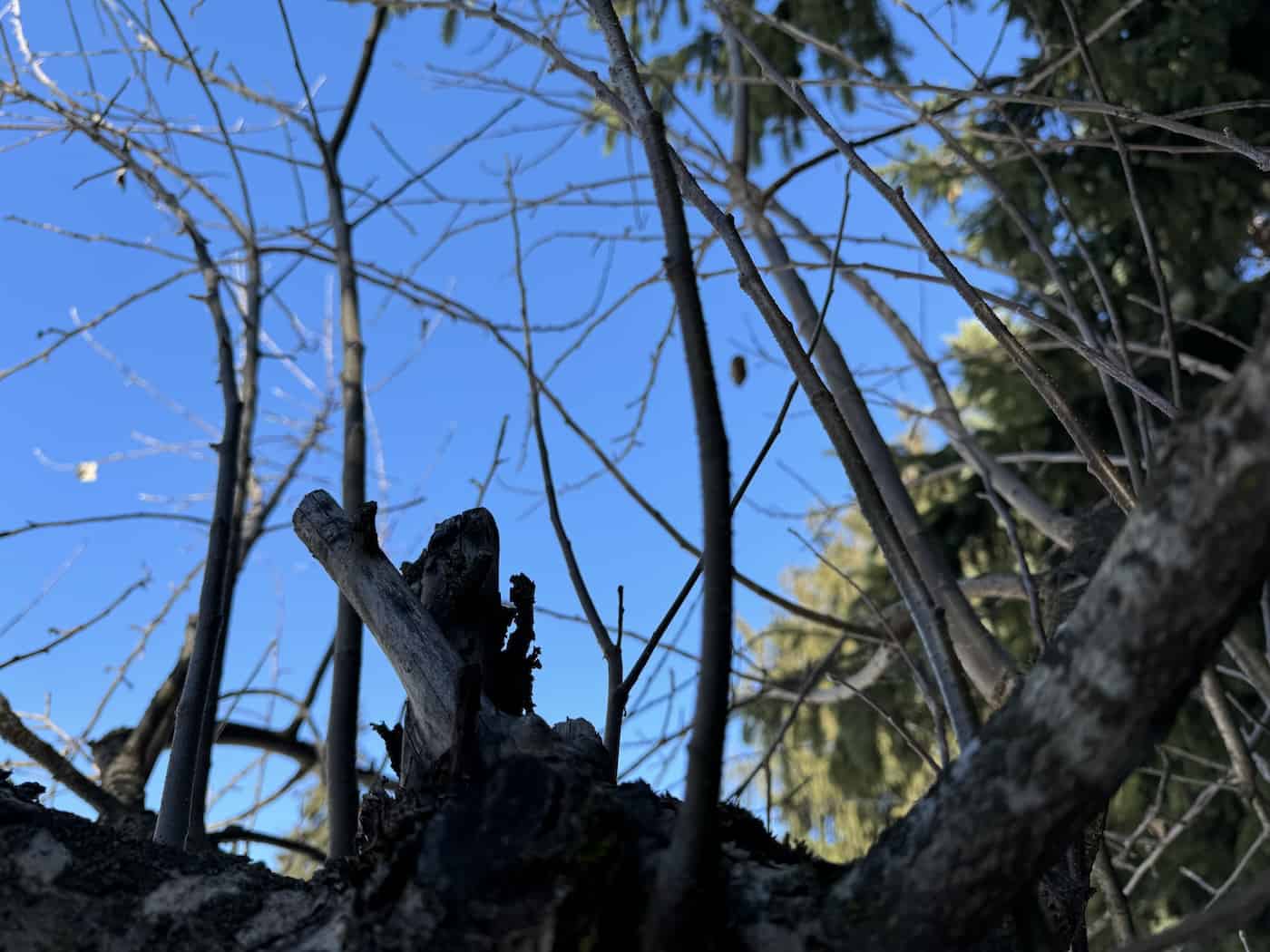
Common pruning methods for apple trees
There are three common methods for pruning apple trees: Central Leader, Modified Central Leader, and Open-Center. Take a look at what each means and whether they will be good options for your apple trees and fruit trees.
Central leader
If you have a backyard orchard, you will most likely use a central leader pruning method. When you prune using this method, you will get a round, almost Christmas tree shape for your apple trees. Central leader trees have an aesthetic feel and are meant to look nice while giving the apples the benefits they need.
Modified central leader
A modified central leader pruning method means pruning 1/3 of the new growth on the tree branches. This includes only the new growth from the season, not overall. Completely remove dead, damaged, and diseased limbs. This also involves pruning limbs that grow inward toward the center of the fruit tree.
Open center
Pruning to this system creates a v-shaped tree with an open center at the top. Open-center trees allow great air circulation and sunlight to penetrate the tree branches. This reduces the development of rot on the fruit that grows. Apple trees don’t appreciate brown rot on their fruit.
Choosing a pruning method
Some varieties of apple trees are naturally upright, like Jonathan and Red Delicious. These varieties are best trained as central leaders. Other varieties of apple trees, like Golden Delicious, are naturally spreading and are best trained in open-center form. Certain varieties, like Cortland and Idared, are tip-bearing and should be trained to open the center rather than the central leader.
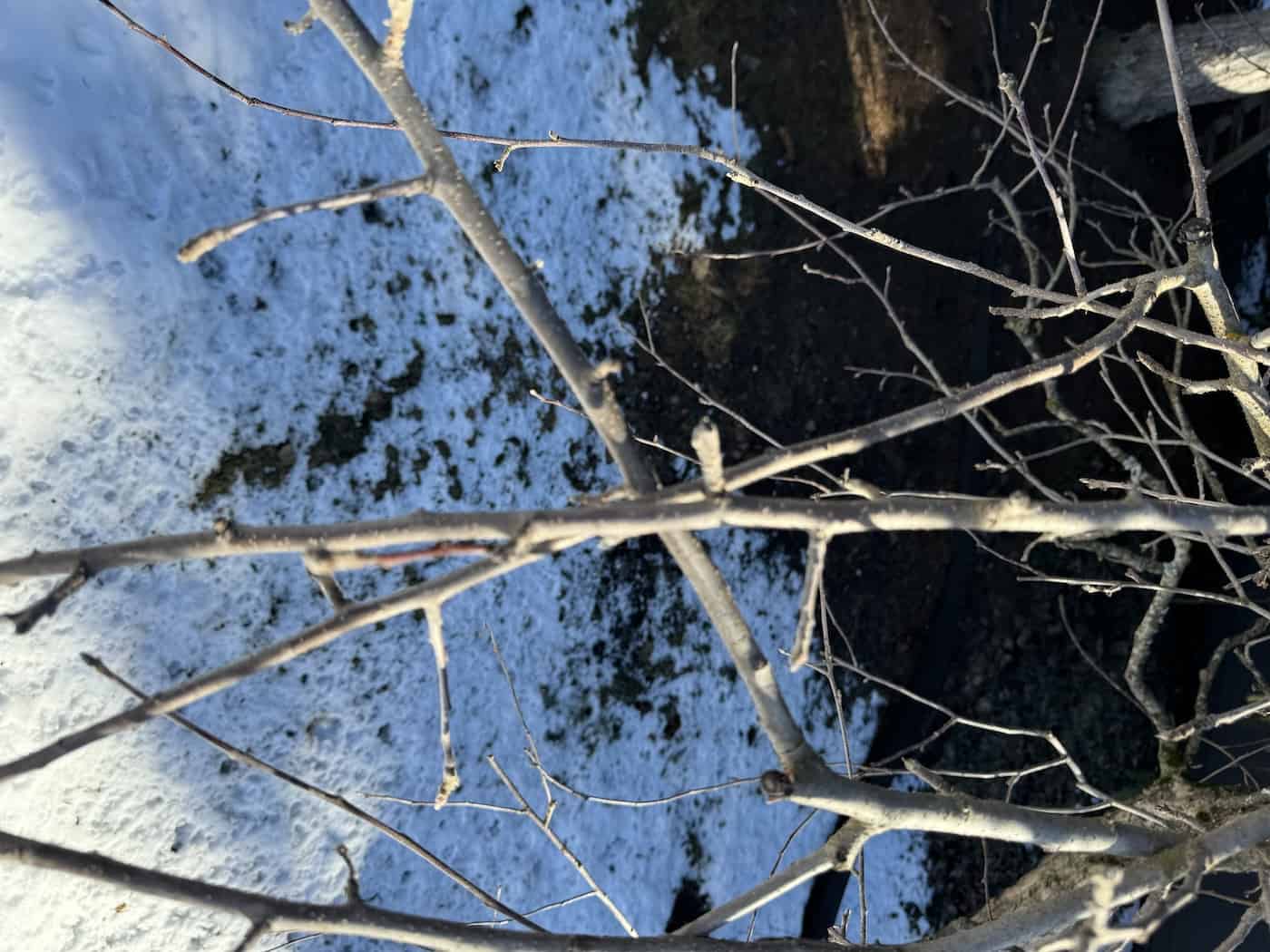
Pruning goals
When pruning an apple tree, the grower has 2 important goals. Number one, they are pruning back long limbs that may be blocking sunlight. When you prune a tree, you are allowing maximum sunlight to penetrate the flower buds on the tree. This allows them to get all the energy they need to grow.
Number two, pruning an apple tree allows plenty of airflow in the tree branches. The more airflow you get, the less chance there is of diseased branches on your fruit trees. This will also avoid an overgrown apple tree. A mature apple tree requires just as much pruning as a younger tree.
Pruning tools
Before you get started with pruning your apple tree, you will want some basic tools. Here are some favorites:
Hand pruner: Most of your apple tree pruning will require you to get up close and personal with the tree branches. Use a small hand pruner (also known as pruning shears) for this job. I recommend getting a high-quality pruner that won’t break or rust. Your wallet will thank you in the long run.
Lopper: Larger and more mature trees will be difficult to cut with a handheld tool, so grab a lopper for these. You won’t need this one as much as the hand pruner, so you can opt for a cheaper version. It will likely stay in the shed most of the year but will be needed from time to time. This tool is important for keeping a healthy apple tree.
Pruning saw: Any handsaw will do for this, and you will only need it on rare occasions. Make sure to have one on hand for thick trunks and branches, though. These are necessary for thick limbs that may be blocking good sunlight. Mature apple trees will have more of these, so keep this tool on hand if you have full-grown trees with larger branches.
A mix of these tools will be great to have if you have trees with larger branches or an overgrown apple tree. You will want to prune your fruit tree to get rid of diseased branches and they work well on other fruit trees as well.


